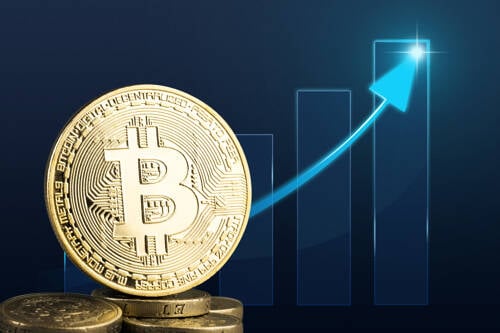BTC USD: Shocking Price Trends Revealed

Understanding BTC to USD: What Sets It Apart?
The BTC USD exchange rate is one of the most widely observed crypto market pairs globally. Bitcoin (BTC) operates as a decentralized digital currency with a market value that changes based on factors ranging from investor sentiment to global economic trends. Unlike traditional currencies, Bitcoin is not tied to any central bank, adding a unique layer of volatility to the BTC USD exchange. Understanding this pairing involves analyzing Bitcoin’s core features, U.S. dollar trends, and the complex forces that influence its price. This combination makes BTC USD a focus for both new and seasoned investors eager to navigate its opportunities and risks.
The Role of BTC in the Global Market
Bitcoin holds a unique position within both the cryptocurrency ecosystem and the broader financial world. As the first and most widely recognized decentralized cryptocurrency, BTC has grown as a store of value, a digital payment system, and a highly speculative asset. The BTC USD pair, specifically, is pivotal for U.S.-based traders and those who benchmark their investments in dollars. As Bitcoin’s appeal grows worldwide, the BTC USD pairing becomes increasingly essential for understanding its economic impact, especially as Bitcoin gains traction in markets with unstable local currencies.
Factors Influencing the BTC USD Exchange Rate
Numerous factors affect BTC USD rates, including Bitcoin’s limited supply, regulatory announcements, and global economic conditions. Bitcoin’s maximum supply is set at 21 million coins, creating scarcity that contributes to its market valuation. Regulatory updates, particularly those related to cryptocurrency laws in large economies, can quickly impact BTC USD prices. Additionally, global economic events often affect BTC USD as investors react to factors like inflation, interest rates, and the U.S. dollar’s strength. The BTC USD exchange rate thus mirrors Bitcoin’s own distinct features alongside reactions to traditional financial shifts.

Why BTC USD is Highly Volatile
The BTC USD rate experiences substantial volatility due to the unique nature of Bitcoin and shifts in investor sentiment. Unlike traditional assets, Bitcoin is neither backed by physical assets nor controlled by a central authority, allowing its price to fluctuate based on public interest, news events, and market speculation. For instance, corporate announcements about Bitcoin adoption or sudden regulatory news can dramatically impact BTC USD values. This volatility makes BTC USD a potentially high-reward investment, though it also involves significant risks. Understanding these factors is key for anyone trading BTC USD.
The Influence of U.S. Dollar Trends on BTC Value
The BTC USD rate is often influenced by the relative strength of the U.S. dollar. As the world’s primary reserve currency, the USD affects global investment flows and economic stability. A strong dollar can add downward pressure to BTC USD rates as investors turn to lower-risk options. Conversely, a weaker dollar can increase Bitcoin’s appeal as an alternative investment. Following inflation rates, Federal Reserve decisions, and economic indicators can offer insight into BTC USD trends, helping traders better understand how broader U.S. dollar trends might impact Bitcoin’s value.
Strategies for Trading BTC USD
Trading the BTC USD pair effectively requires adapting to its high volatility and the unique structure of cryptocurrency markets. Long-term strategies focus on Bitcoin’s growth potential and its fixed supply, while short-term strategies capitalize on rapid price changes in BTC USD. Many traders employ technical analysis, relying on chart patterns and indicators to predict movements in BTC USD. Managing risk is also crucial, as BTC USD rates can fluctuate significantly within short periods. Successful trading with BTC USD involves thorough research, market trend analysis, and a balanced approach to risk management.
Is BTC USD a Reliable Investment Choice?
Investing in BTC USD is appealing due to Bitcoin’s historical growth but requires a solid understanding of its risks. Bitcoin has demonstrated significant long-term value gains, drawing in investors who view BTC as a hedge against traditional markets. However, the volatility of BTC USD means that investors should be prepared for frequent price shifts, sometimes within minutes. As with any financial venture, understanding the risks and conducting careful research is essential for making informed decisions about BTC USD.
Future of BTC USD: What’s Next?
The BTC USD exchange rate will likely remain a focal point in cryptocurrency discussions. Advances in blockchain technology, regulatory changes, and shifts in the economy will shape its future. Increased adoption of Bitcoin by large institutions and potential developments in central bank digital currencies (CBDCs) may influence BTC USD rates. As more countries explore the benefits of Bitcoin, BTC USD could either stabilize or experience greater fluctuations, depending on global financial policies. Staying informed on Bitcoin and economic trends will provide a clearer picture of the future for BTC USD.













